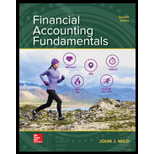
Time Value of Money:
The value of the money changes with the change in time. If an individual deposits his savings in the bank then, the amount will increase at the specified interest rate. But if he invests that same amount in different avenues then he may get loss or more profit.
To identify: The interest rate column of Table B.2 is would require to take into consideration for the calculation of future value.
Explanation of Solution
1.
The annual interest rate is 8% and it is required to convert it compounded quarterly.
The interest rate is 8%.
Formula to calculate the conversion from annual interest rate to quarterly interest rate,
Substitute 8% for annual rate.
The interest rate is 2% quarterly.
Convert number of years into number of quarters
The time period is 2 years.
Formula to convert number of years into number of quarters,
Substitute 2 for number of years.
The numbers of quarters are 8 quarters.
In Table B.2 it is required to use the column which has 2% interest rate and 8 quarters.
Hence , for the 8% annually compounded quarterly use the column which shows 2% interest rate and 8 duration.
2.
The interest rate is 12%.
The discount factor in Table B.2 at 12% interest rate and 2 years is 1.2544.
Hence , for the 12% annual interest rate and 8 years use the column which has the discount factor 1.2544.
3.
The annual interest rate is 6% and it is required to convert it compounded semi-annually.
The interest rate is 6%.
Formula to calculate the conversion from annual interest rate to semi-annual interest rate,
Substitute 6% for annual rate.
The interest rate is 3% semi-annually.
Convert number of years into number of semi-annuals
The time period is 2 years.
Formula to convert number of years into number of semi-annuals,
Substitute 2 for number of years.
The numbers of semi-annuals are 4 semi-annuals.
In Table B.2 it is required to use the column which has 3% interest rate and 4 semi-annuals.
Hence , for the 6% annually compounded semi-annually use the column which shows 3% interest rate and 4 duration.
4.
The annual interest rate is 12% and it is required to convert it compounded monthly.
The interest rate is 12%.
Formula to calculate the conversion from annual interest rate to monthly interest rate,
Substitute 12% for annual rate.
The interest rate is 1% monthly.
Convert number of years into number of months
The time period is 2 years.
Formula to convert number of years into number of months,
Substitute 2 for number of years.
The numbers of months are 24.
In Table B.2 it is required to use the column which has 1% interest rate and 24 month.
Hence , for the 12% annually compounded semi-annually use the column which shows 1% interest rate and 12 duration.
Want to see more full solutions like this?
Chapter B Solutions
FINANCIAL ACCT.FUND.(LOOSELEAF)
- What is the company's plantwide overhead rate?arrow_forwardKindly help me with this general accounting questions not use chart gpt please fast given solutionarrow_forwardSolve step by step: A company has the following information for the year:Net Income: $200,000Dividends Paid: $50,000Beginning Retained Earnings: $100,000What is the ending retained earnings?arrow_forward
- Could you explain the steps for solving this financial accounting question accurately?arrow_forwardNo use AI , A company purchased equipment for $50,000. It expects the equipment to have a useful life of 5 years and no salvage value. Using the straight-line method of depreciation, what is the annual depreciation expense?arrow_forwardHow much is the standard cost per direct labor hour for variable overhead ?arrow_forward
- ??arrow_forwardi want to this Financial Accounting question answerarrow_forwardsolve step by step : A company purchased equipment for $50,000. It expects the equipment to have a useful life of 5 years and no salvage value. Using the straight-line method of depreciation, what is the annual depreciation expense?arrow_forward
- I need help with this general accounting question using the proper accounting approach.arrow_forwardA company has the following information for the year:Net Income: $200,000Dividends Paid: $50,000Beginning Retained Earnings: $100,000What is the ending retained earnings?arrow_forwardI am searching for the correct answer to this general accounting problem with proper accounting rules.arrow_forward
 College Accounting, Chapters 1-27AccountingISBN:9781337794756Author:HEINTZ, James A.Publisher:Cengage Learning,
College Accounting, Chapters 1-27AccountingISBN:9781337794756Author:HEINTZ, James A.Publisher:Cengage Learning,
